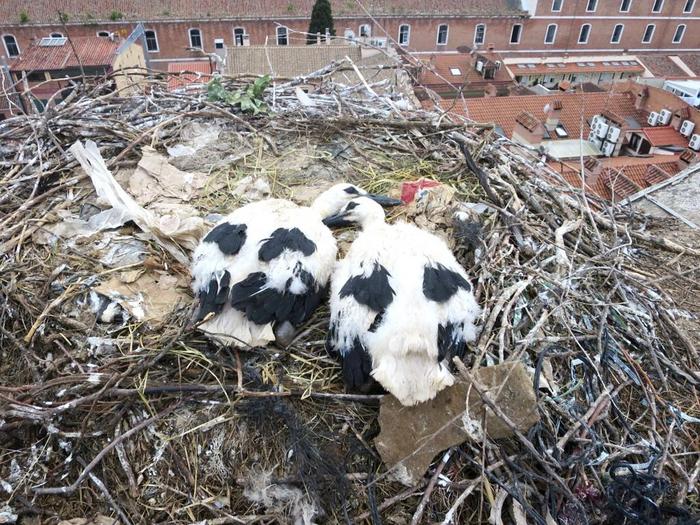Amongst feathers and twigs
the songbird adorns her nest
with discarded skins
of silken sweets
and plastic string,
cellophane shells that
glisten with grubby foil
and the grim delights
of a thousand castoff
fag ends.
In cradles weaved with care
the cold seeps in,
warmth usurped
by the ghost
of intervention.
The nest,
though glittering with gold,
bears an unsettling sheen
as our touch leaves its mark
on the load she bears –
an echo of existence,
indelibly stained
on these spoiled
and fragile homes.

This poem is inspired by recent research, which has found that human-made materials in nests can bring both risks and benefit for birds.
Many bird species have started incorporating human litter, such as sweet wrappers, cigarette butts, and plastic strings, into their nests. This trend is occurring in diverse environments, from seabirds in Australia incorporateing fishing nets into their nests to common blackbirds in Europe picking up plastic bags to add to theirs. While these items can serve some useful purposes for the birds, such as acting as a signal to others or warding off parasites, they can also introduce significant challenges. Young birds can become entangled in these materials, and the nests may fail to provide adequate warmth due to the insulative properties of these human-made items.
In this new study, researchers delved deeply into the scientific literature to unravel why exactly birds are using these human-created items, or anthropogenic nest materials (ANMs), and what factors influence this behaviour. The team searched for patterns among different bird species, considering various factors like the differences between males and females and the type of nests they construct. The findings lend credence to the idea that the use of ANMs might be a bird’s way of demonstrating its nest-building prowess to other birds. However, the study failed to discover any evidence suggesting that a bird’s age or the relocation to a new nesting site contributes to this behaviour. Intriguingly, this trend doesn’t seem confined to any specific bird lineage, suggesting that it’s a common behaviour cutting across various bird species. This research raises concerns, as it is becoming more and more clear that these types of materials can hurt both young birds and even fully grown ones.
A common thing in nest building close to human habitation. In Newcastle there is an old industrial area that has now been gentrified, the Ouseburn runs through it. Swans now live in this habitat. A nest, close to and old industrial building, now a bar and event space, was a mixture of natural and man-made materials. I know this might be detrimental to the swans, but the nest was an amazing construction and it is wonderful to see these animals in such an area.
Absolutely Mark – there are definitely benefits as well.